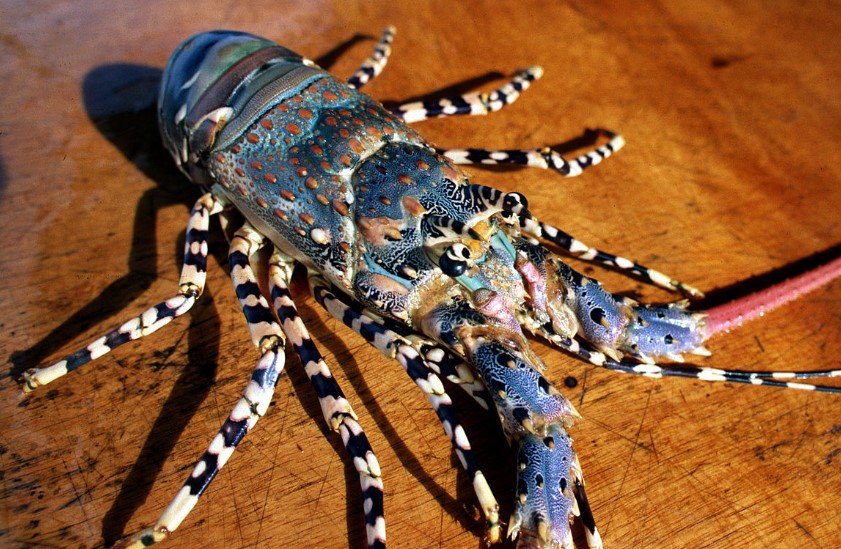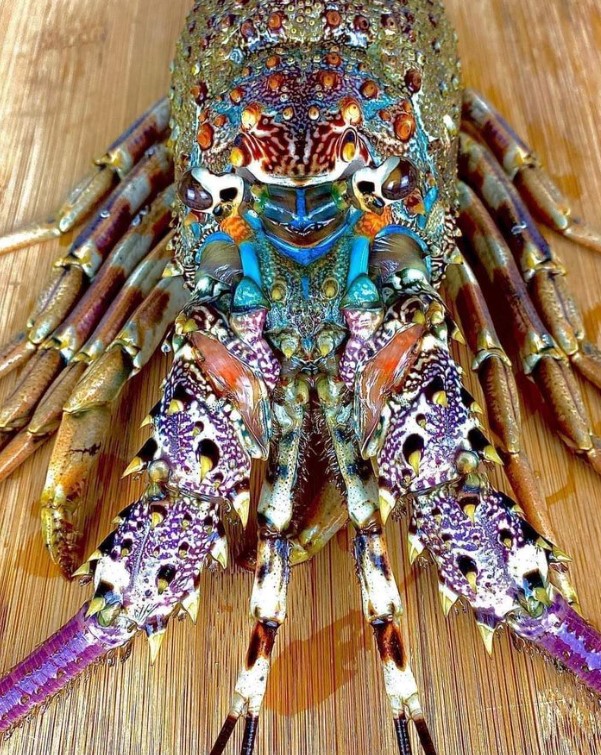Panulirus ornatus, commonly referred to by various names such as tropical rock lobster, ornate rock lobster, ornate spiny lobster, and ornate tropical rock lobster, is a species of large, edible spiny lobster that has the ability to undergo 11 developmental stages in its life cycle. This species can also be successfully bred in captivity.
Found across the Indo-Pacific, from the Red Sea and KwaZulu-Natal in the west to Japan and Fiji in the east, this lobster species inhabit shallow waters, typically no deeper than 50 meters. In some areas, they are caught by netting or spearing, while in Northeast Australia, a regulated commercial fishery has been in place since 1966. The Ornate Lobster has also made its way into the Mediterranean through the Suez Canal.
The lobster species is a crucial source of livelihood for many fisheries in Vietnam, Papua New Guinea, the Torres Strait in Australia, and other Indo-Pacific regions. Due to the high demand for this species for commercial purposes, countries such as Australia and Indonesia have started implementing successful aquaculture practices to protect the species and maintain its populations.
P. ornatus, the Ornate Lobster, feeds on a diverse range of invertebrates, including bivalves, gastropods, and small crustaceans. These lobsters derive energy and several functional benefits, such as reproductive success, post-larval development, antioxidants, and stress resistance, from carotenoids. In aquaculture facilities, they primarily consume crustacean feeds that are rich in carotenoids, particularly astaxanthin. Despite the presence of nutrients from blue and green-lipped mussels in the feeds, experiments have revealed that the carotenoid level provided by these alone is inadequate for the proper growth and development of the lobsters.
It is a large species of lobster, with a carapace (shell) length of up to 20 cm, and is characterized by its ornate pattern of blue and yellow stripes and spots. The Ornate Rock Lobster boasts a large blue-green shell, which is complemented by its impressive frontal horns. Its body is decorated with striking stripes and spots in various colors, while its walking legs are adorned with intricate stripes that give it a spider-like appearance.
P. ornatus is a commercially important species of lobster and is highly valued for its meat, which is considered to be of high quality. It is harvested for food and for the aquarium trade, although overfishing and habitat destruction have led to declining populations in some areas. In some countries, Ornate Lobster is considered a delicacy and is often served in high-end restaurants.
The Ornate Rock Lobster migrates annually to the Gulf of Papua to breed, starting in mid to late August. Breeding season is from November to March/April, with males entering shallower water and females deeper water until the eggs hatch. Most breeding adults are three years old, with larger males and smaller females.
After mating, there is high mortality in breeding adults. The migration is to disperse larvae in currents that favor distribution near the Torres Strait. Dispersed larvae must migrate as juveniles to adult habitats in the northern Torres Strait, where they stay for 1-2 years until breeding age and the annual migration.
The life cycle of Panulirus ornatus, the Ornate Rock Lobster, involves 11 larval stages and several annual migrations for breeding. The migration to breed begins in mid to late August and the breeding season lasts from November to March/April. During the migration, ovary development, mating, and initial egg-laying occur. After migration, the sexes segregate by water depth, with males entering shallower water and females entering deeper water until the eggs have hatched.
Female Ornate Rock Lobsters can produce up to three broods with a reduction in size in each subsequent brood. Most breeding adults are three years old, with larger males and smaller females. After mating, there is high mortality among breeding adults. There is no return migration of breeding adults, as reproductive migration occurs to disperse larvae in oceanic currents that favor their distribution near the Torres Strait.
Dispersed larvae must migrate as juveniles to the adult habitat in the northern Torres Strait, where they remain in specific reef complexes for 1-2 years until they reach breeding age and undertake the annual migration to breed. Throughout their life cycle, Ornate Rock Lobsters feed on a variety of invertebrates, including bivalves, gastropods, and small crustaceans, and depend on carotenoids for energy and other functional benefits.
The price of Panulirus ornatus (also known as the tropical rock lobster) varies depending on the region, season, and supply and demand. On average, the price of a kilogram of ornate rock lobster in Southeast Asia can range from around $20 to $50, while the price in Australia can be higher, ranging from $40 to $100 or more per kilogram. It is important to note that these prices are subject to change and fluctuations in the market. Read More – Halitrephes maasi Jellyfish Facts

